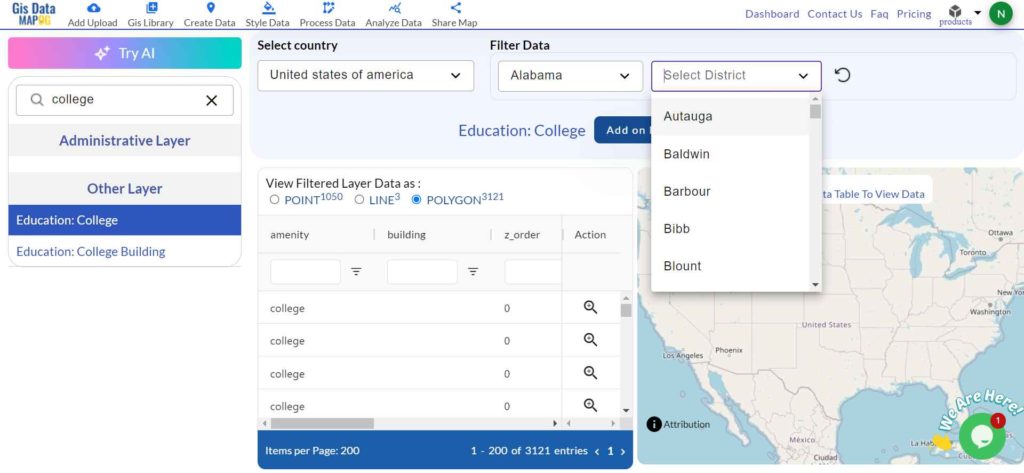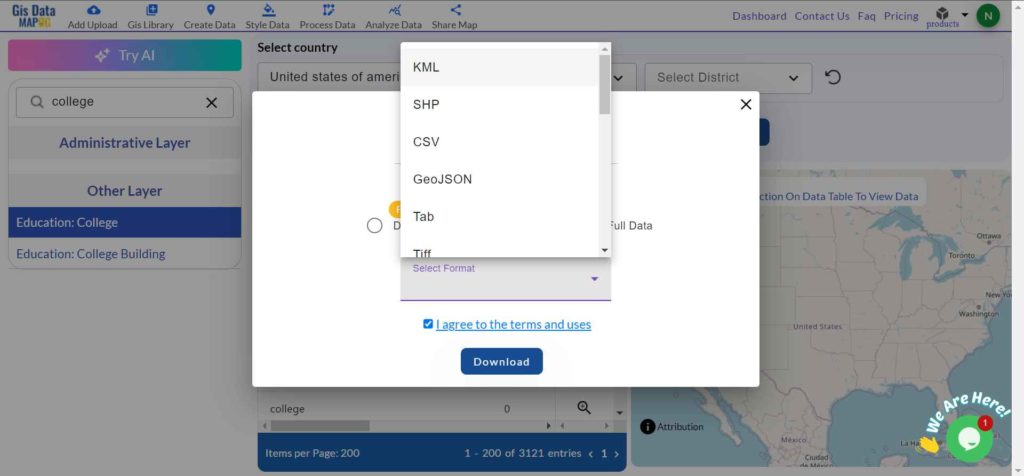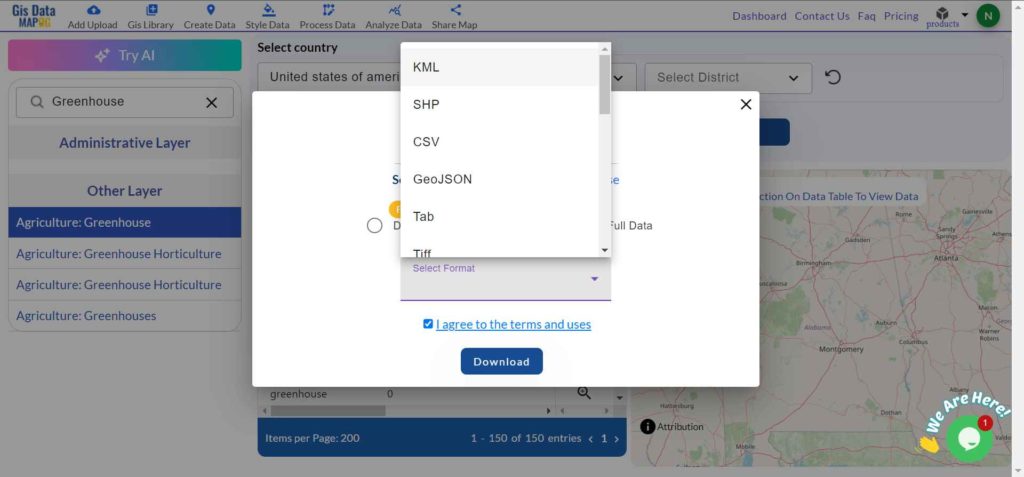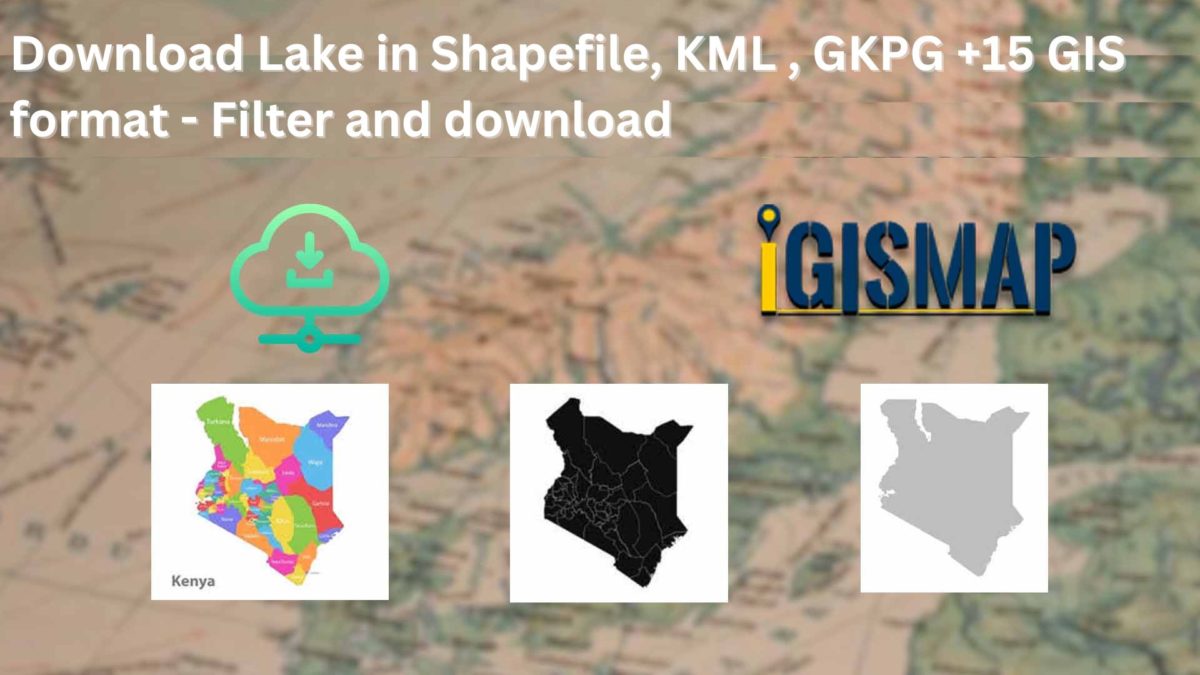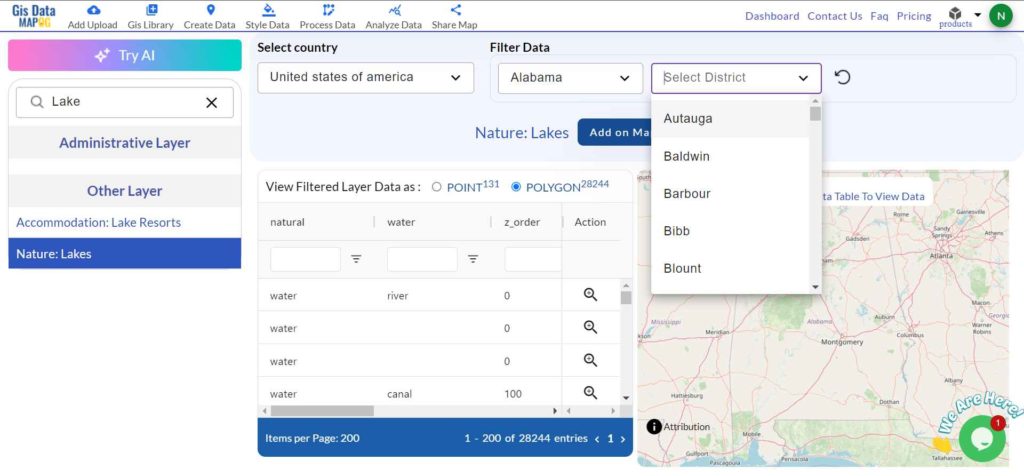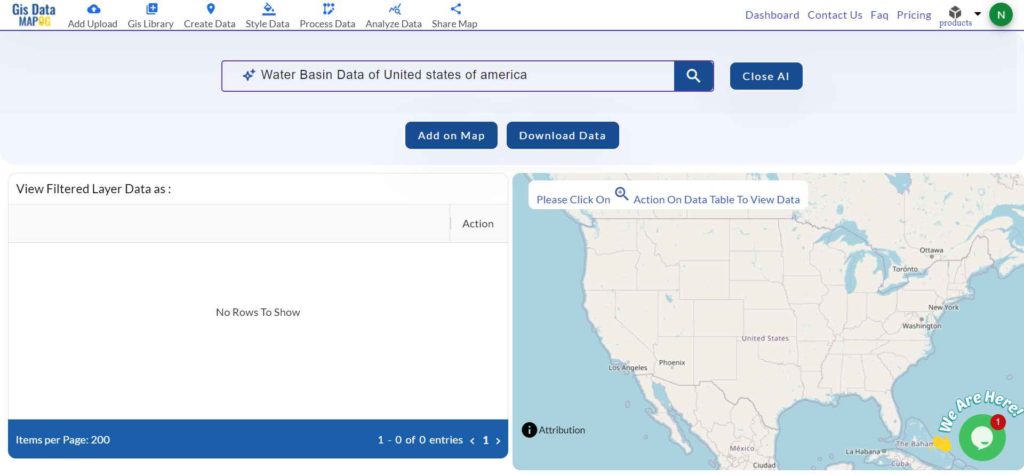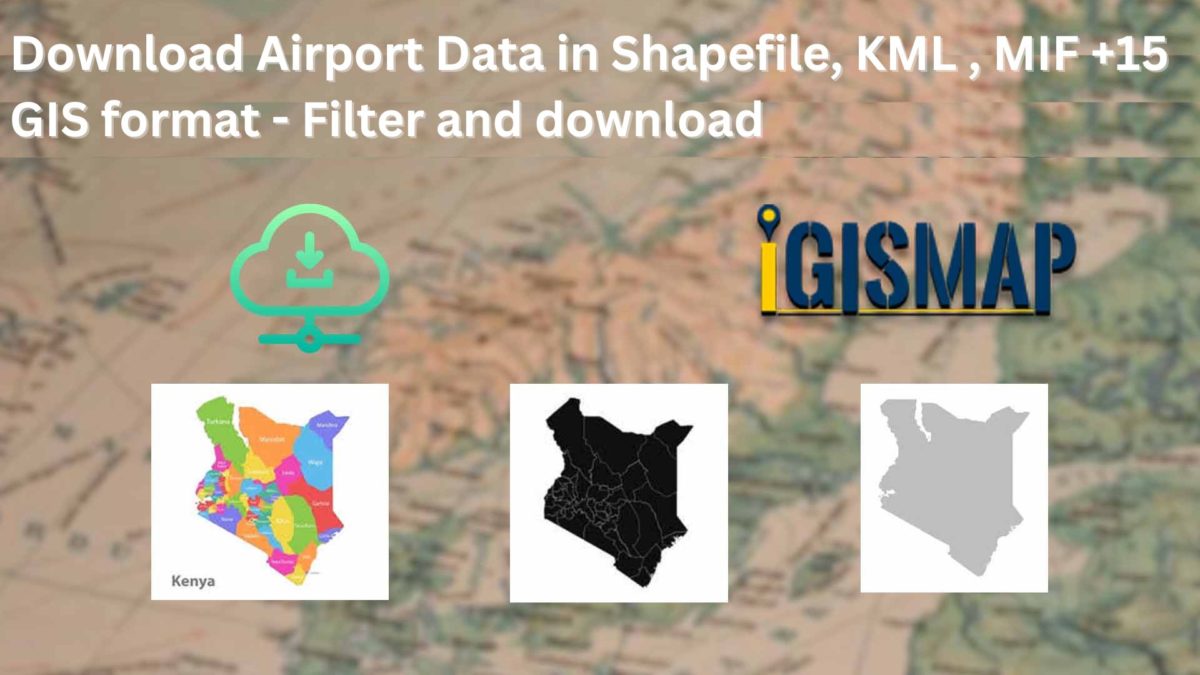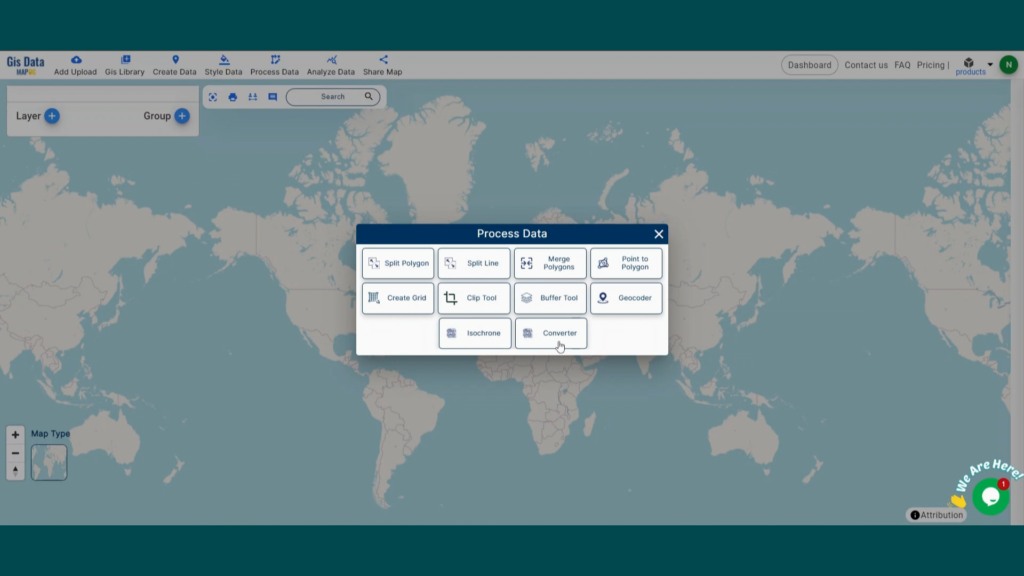GIS Data by MAPOG is a user-friendly portal that enables users to download National Park data in Shapefile, KML, and GeoJSON formats. It simplifies the process of accessing administrative and geographic datasets so that detailed mapping and analysis of National Parks can be done worldwide. It supports more than 15 formats, ensuring compatibility with almost all GIS tools.
Overview of the Process
GIS Data by MAPOG streamlines downloading National Park data by offering a step-by-step guide. Users can explore data from 200+ countries and 900+ layers. The platform’s extensive format options make it easy to integrate the data into different GIS applications for analysis and planning.
The available formats include KML, SHP, CSV, GeoJSON, Tab, SQL, Tiff, GML, KMZ, GPKZ, SQLITE, Dxf, MIF, TOPOJSON, XLSX, GPX, ODS, MID, and GPS. This ensures compatibility with various applications.
Download National Park data of any countries
Note:
- All data is provided in GCS datum EPSG:4326 WGS84 CRS (Coordinate Reference System).
- Users need to log in to access and download their preferred data formats.
Steps to Access and Download National Park Data
Step 1: Locate National Park Data
Log in and open the GIS Data interface. Select a country and use the search layer to find “National Park” data. Check the data’s attributes, such as whether it’s in point or polygon format.
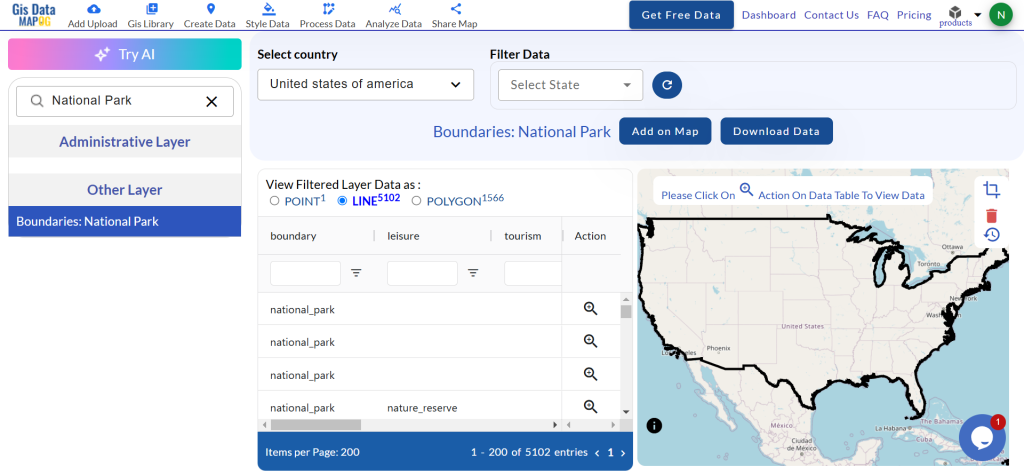
Step 2: Use the AI Search Tool
Simplify your search with the “Try AI” feature. Type in what you’re looking for, and the tool will quickly provide relevant results. This saves time and improves search accuracy.

Step 3: Apply Filters for Precision
The filter data option lets you narrow down your search by state or district. This is particularly useful for finding specific National Parks within a region, providing more precise datasets for analysis.

Step 4: Visualize Data on the Map
Click “Add on Map” to overlay the data on the Map analysis interface. This helps visualize spatial relationships and patterns, supporting better insights. Users can add data to a new map or integrate it into an existing one.
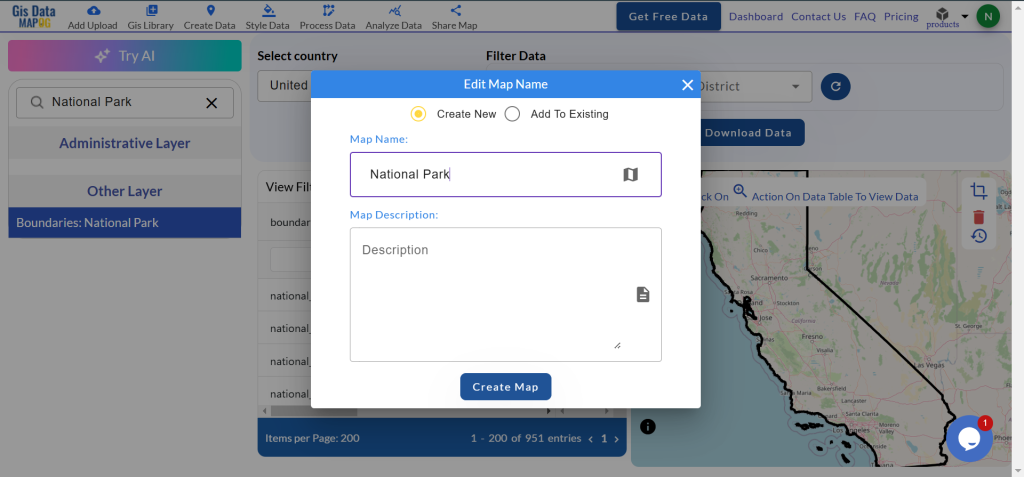
Step 5: Download the Data
Once satisfied with your selection, click “Download Data.” Choose between sample data or the full dataset. Select your preferred format—Shapefile, KML, or any of the 15+ supported options. Agree to the terms and initiate the download.

Conclusion
GIS Data by MAPOG allows users to freely download National Park data in multiple formats. It provides accurate and current geographic information for applications like conservation, environmental studies, and policy planning. This platform serves as an important tool both for professionals and enthusiasts in GIS.
With MAPOG’s versatile toolkit, you can effortlessly upload vector and raster files, add WMS (Web Map Service) layers, upload Excel or CSV data, incorporate existing files, perform polygon splitting and merging, generate new polygon and polyline data, use the converter for various formats, conduct buffer analysis, create grids, transform points into polygons, calculate isochrones, and utilize the geocoder for precise location information.
For any questions or further assistance, feel free to reach out to us at support@mapog.com. We’re here to help you make the most of your GIS data.
Download Shapefile for the following:
- World Countries Shapefile
- Australia
- Argentina
- Austria
- Belgium
- Brazil
- Canada
- Denmark
- Fiji
- Finland
- Germany
- Greece
- India
- Indonesia
- Ireland
- Italy
- Japan
- Kenya
- Lebanon
- Madagascar
- Malaysia
- Mexico
- Mongolia
- Netherlands
- New Zealand
- Nigeria
- Papua New Guinea
- Philippines
- Poland
- Russia
- Singapore
- South Africa
- South Korea
- Spain
- Switzerland
- Tunisia
- United Kingdom Shapefile
- United States of America
- Vietnam
- Croatia
- Chile
- Norway
- Maldives
- Bhutan
- Colombia
- Libya
- Comoros
- Hungary
- Laos
- Estonia
- Iraq
- Portugal
- Azerbaijan
- Macedonia
- Romania
- Peru
- Marshall Islands
- Slovenia
- Nauru
- Guatemala
- El Salvador
- Afghanistan
- Cyprus
- Syria
- Slovakia
- Luxembourg
- Jordan
- Armenia
- Haiti And Dominican Republic
- Malta
- Djibouti
- East Timor
- Micronesia
- Morocco
- Liberia
- Kosovo
- Isle Of Man
- Paraguay
- Tokelau
- Palau
- Ile De Clipperton
- Mauritius
- Equatorial Guinea
- Tonga
- Myanmar
- Thailand
- New Caledonia
- Niger
- Nicaragua
- Pakistan
- Nepal
- Seychelles
- Democratic Republic of the Congo
- China
- Kenya
- Kyrgyzstan
- Bosnia Herzegovina
- Burkina Faso
- Canary Island
- Togo
- Israel And Palestine
- Algeria
- Suriname
- Angola
- Cape Verde
- Liechtenstein
- Taiwan
- Turkmenistan
- Tuvalu
- Ivory Coast
- Moldova
- Somalia
- Belize
- Swaziland
- Solomon Islands
- North Korea
- Sao Tome And Principe
- Guyana
- Serbia
- Senegal And Gambia
- Faroe Islands
- Guernsey Jersey
- Monaco
- Tajikistan
- Pitcairn
Disclaimer : The GIS data provided for download in this article was initially sourced from OpenStreetMap (OSM) and further modified to enhance its usability. Please note that the original data is licensed under the Open Database License (ODbL) by the OpenStreetMap contributors. While modifications have been made to improve the data, any use, redistribution, or modification of this data must comply with the ODbL license terms. For more information on the ODbL, please visit OpenStreetMap’s License Page.
Here are some blogs you might be interested in:
- Download Airport data in Shapefile, KML , MIf +15 GIS format – Filter and download
- Download Bank Data in Shapefile, KML, GeoJSON, and More – Filter and Download
- Download Railway data in Shapefile, KML, GeojSON +15 GIS format
- Download Farmland Data in Shapefile, KML, GeoJSON, and More – Filter and Download
- Download Pharmacy Data in Shapefile, KML, GeoJSON, and More – Filter and Download

















